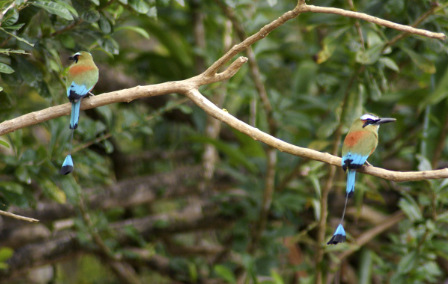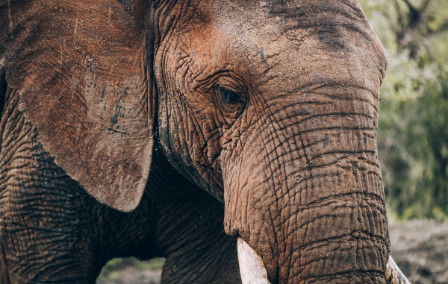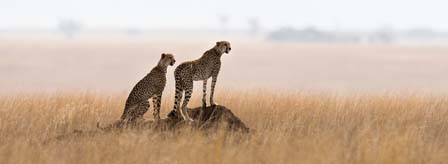Published 28th Jun. 2021
Reading time
The last few weeks have been something of an emotional rollercoaster, haven't they? There was the absolute madness of the Cricket World Cup final, the devastation of honorary Brit Roger Federer losing in the Wimbledon final and, of course the annual updates to the UNESCO World Heritage lists. Those clever types at UNESCO have added further gems to their lists of the world's finest places and experiences but, in our humble opinion, we think there are several that fully deserve UNESCO status but haven't yet made the cut. Cue us hopping aboard our soapbox to start the campaign for inclusion in next year's list, with a few unsung favourites and some genuine head-scratchers as to why they've not made the grade before...
Raja Ampat, Indonesia
The idyllic region of Raja Ampat, a cluster of islands located off the east of Indonesia, may already be on the UNESCO 'tentative list', but we think it should be fast-tracked straight to World Heritage Site status. Why? Because it sits at the epicentre of the fabled Coral Triangle, containing a whopping 75% of the world's coral diversity. This in turn means fish and other marine critters in abundance, so whether you're a pro diver or just a snorkeller, you'll see more species of fish than anywhere else on the planet. On land, the islands of Raja Ampat are home to crested cockatoos, majestic hornbills and acres of virgin rainforest just begging to be explored, while you stay aboard one of the luxurious liveaboard boats plying these beautiful waters.
Timkat Festival, Ethiopia
The Timkat festival (every January) embodies so much of what makes Ethiopia such a remarkable destination and fully deserves UNESCO Intangible Cultural Heritage status. This Orthodox Christian festival celebrates the baptism of Jesus Christ in the Jordan River. After some spectacular processions involving much colourful singing and dancing, a mass of 80,000 people carrying candles and dressed in white gather at the sacred pool in Gondar. After the water has been blessed, people frantically leap into the pool, gleefully soaking themselves (and bystanders) in the holy water. Combined with Ethiopia's UNESCO World Heritage Sites (such as visiting the rock-hewn churches at Lalibela and hiking in the beautiful Simien National Park), Ethiopia is a UNESCO go-to.
Bohuslan Peninsula, West Sweden
The Bohuslan coast stretches north from charming Gothenburg, all the way to the Norwegian border and is worthy of a World Heritage Site listing thanks to its deep forests straight out of a Hans Christian Andersen fairy tale, rocky coastlines and islands dotted with colourful clapboard houses. Perfect for good, clean outdoorsy fun, the unspoilt archipelago is best explored by kayak. Meanwhile, gastronauts should prepare to salivate, as the seafood culture is second to none. Head out on a seafood safari from the fishing village of Lyckorna to help gather and gorge on the freshest prawns, lobsers, oysters, muscles, crayfish and langoustine. Woolly Nordic jumper wearing is strongly encouraged and if you're there for early August join the Swedes as they celebrate the annual Crayfish Festival.
Corcovado National Park, Costa Rica
The Osa Peninsula is described by National Geographic as 'the most biologically intense place on Earth', and the jewel in the crown has to be the Corcovado National Park. Cramming 2.5% of the planet's biodiversity into just 0.001% of its surface area, Corcovado provides the experience of a lifetime for environment lovers. One of the country's most remote parks, you can see nature in all its splendour as dense forests open up to gorgeous unspoiled beaches. We could spend hours naming every mammal, bird, amphibian and reptile species which calls Corcovado home, but it would be far better to meet them in person by hiking along some the excellent trails the park has to offer. Oh, and we haven't even mentioned the 13 ecosystems yet. Tentative UNESCO status? Nailed on if you ask us.
Walking Safaris, Zambia
The home of the walking safari, Zambia is a classroom in the wild, with your expert guide as teacher. Different from a classic 4x4 safari, walking safaris see you fully immersed in the wilderness. You may not see as much big game, but with your guide pointing things out as you walk, you'll appreciate the smaller details. Learn about varieties of plantlife, see the sensational landscapes up close and find out about tracking animals in a safe manner. South Luangwa National Park has a reputation for running the finest guided walking safaris. We can tailor a multi-day safari where each evening you arrive at a fly camp set up by an advance team. Sit by a crackling campfire discussing the day's sightings and enjoying a well-earned sundowner cocktail before spending the night in a tent listening to the sounds of the wild outside. That's about as tangible as cultural heritage gets.
Lake Inle, Myanmar
Another for UNESCO's Intangible Cultural Heritage list, the vast Inle Lake is a different world to the rest of Myanmar. The local Intha people lead extraordinary lives, lived entirely on the water. Floating gardens are built on stilts (like Intha houses) on the river banks, allowing a variety of vegetables and flowers to flourish, while the local fisherman are famed for their remarkable rowing style, which involves standing on one leg, whilst the other is wrapped around the oar. This then leaves their hands free to manipulate the conical fishing nets which are cast over the glistening water. It's an Instagram-classic scene, and one that deserves bumping up UNESCO's wait list.
Dzongs, Bhutan
Shockingly, Bhutan has not one site or cultural experience officially listed by UNESCO. Criminal! On the 'tentative' list are Dzongs, which are a fascinating type of fortress, serving as the religious, military and social centres of their districts. Often built on hilltops to provide a military vantage point, they are characterised by their inward sloping walls, red ochre surround, huge entry doors and flared roofs. Inside are colourful temples covered in Buddhist motifs, shrines dedicated to deities, and elaborate wooden structures finished with intricate carvings and paintings. Dzongs illustrate the architectural achievements of the people of Bhutan, and are a bucket-list worthy addition to any list. Or there's archery, the Bhutanese national sport but also a window on the country's soul. Or the fact that Bhutan measures Gross National Happiness rather than GDP... We could go on, and so should UNESCO.
Practical advice and inspiration for your next trip

At Original Travel, we often have the ‘conservation conversation’ about how tourism and conservation are inextricably linked. Sadly, we’re all too familiar with the impact of climate change on animal extinction. We know that it can be tricky to know where to begin when travelling responsibly and that 'doing our bit' can look different to different people. So, if you’re wondering how to support wildlife conservation on your next holiday, we’ve compiled a few of our favourite ways to contribute, in places where you can make a real impact and help make animal extinction, well, extinct.
27th September 2024 - Conservation

Deep in Kenya’s Namunyak Conservancy is where you’ll find the Reteti Elephant Sanctuary. Founded in 2017, the Samburu community-owned sanctuary has quickly established itself as a widely recognised and expanding grassroots movement with plenty of success stories. Our Africa specialist, Jamie, had the opportunity to witness their work first-hand and came back so impressed that she believes every trip to the northern reaches of Kenya should feature a visit to Reteti from now on.
12th June 2024 - Kenya Conservation

At Original Travel, we spend a lot of time discussing our part in the great sustainability and tourismdebate, particularly regarding conservation. As champions of responsible travel, we go beyond providing exceptional experiences to actively promote a positive balance between human interests and the preservation of the natural world. Here's a quick summary of our current thinking... The Big Idea Local heroes Sustainable Tourism Original Travel and Sustainable Tourism The Bottom Line The Big Idea Conservation should,
14th February 2024 - Conservation

Our team of destination experts will get to know you and your unique requirements for your holiday

We work with you to build an ultra-personalised holiday itinerary with your choice of accommodation, experiences and activities

All of our holidays include little extras designed to make a big difference to your trip, from fast-tracking you through airport check-in and security to our network of local Concierges